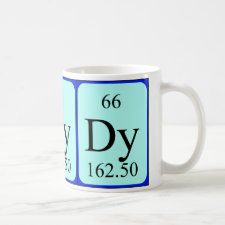
Authors: Biju VM, Gladis JM, Rao TP
Article Title: Ion imprinted polymer particles: synthesis, characterization and dysprosium ion uptake properties suitable for analytical applications.
Publication date: 2003
Journal: Analytica Chimica Acta
Volume: 478
Issue: (1)
Page numbers: 43-51.
DOI: 10.1016/S0003-2670(02)01416-2
Abstract: Dysprosium(III) ion imprinted polymer particles were prepared by the copolymerization of styrene monomers and a crosslinking agent divinylbenzene in the presence of dysprosium(III)-5,7- dichloroquinoline-8-ol-4-vinyl pyridine ternary complex wherein dysprosium(III) ion is the imprint ion and is used to form the imprinted polymer. The dysprosium(III) ion was removed from polymer particles by leaching with 1:1 HCl which leaves a cavity in the polymer particles. The polymer particles both prior to and after leaching have been characterized by IR, TGA, DTA and XRD studies. The leached particles selectively preconcentrated dysprosium ion from dilute aqueous solutions as determined spectrophotometrically using Arsenazo-I as reagent. The optimum pH value for quantitative enrichment is 6-9 and desorption can be achieved by using 25 ml of 1 mol/l of HCl. The retention capacity of the polymer particles was found to be 40.15 mg/g, which is much higher than MIPs prepared by other imprinting techniques. The dysprosium ion imprinting polymer gave 40 times higher distribution ratio for dysprosium ion compared to blank polymer. More significantly the selectivity coefficients of dysprosium compared to other lanthanides results in enhancement by 60-180-fold. The separation factors with respect to other selected lanthanides were also compared with liquid-liquid extractive separation using di-2-ethylhexyl phosphoric acid (D2EHPA) as extractant. The selectivity of dysprosium ion imprinting polymer (HP) particles for dysprosium over yttrium is much higher and comparable in case of Nd and Lu when compared to conventional extractant such as D2EHPA in liquid-liquid extraction (LLE). Five replicate determinations of 50 mug of dysprosium present in 250 ml of sample gave a mean absorbance of 0.150 with a relative standard deviation of 2.42%. The detection limit corresponding to three times the standard deviation of the blank was found to be 2 mug/250 ml. (C) 2002 Elsevier Science B.V All rights reserved
Template and target information: Dysprosium(III), dysprosium ion



Join the Society for Molecular Imprinting

New items RSS feed
Sign-up for e-mail updates:
Choose between receiving an occasional newsletter or more frequent e-mail alerts.
Click here to go to the sign-up page.
Is your name elemental or peptidic? Enter your name and find out by clicking either of the buttons below!
Other products you may like:
 MIPdatabase
MIPdatabase









